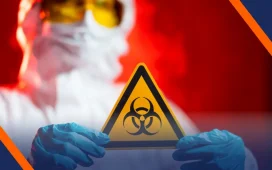A recent Virgin Galactic flight to the edge of space had some ancient and long-dead humans on board.
In a historic first, the fossilised remains of our human ancestors, Australopithecus sediba and Homo naledi, made the flight to space from Spaceport America in New Mexico.
South African-born billionaire Timothy Nash carried the fossils in a cigar-shaped tube.
However, many anthropologists and scientists have criticised the move, saying it is disrespectful to the fossils and to the people who came before us.
The fossils were chosen by Lee Berger, who was behind the discovery of both species.
One of the fossils was a fragment of the collarbone of a 2 million-year-old Australopithecus sediba, which was first discovered by Mr Berger’s son Matthew in 2008.
The other fossil was a thumb bone from Homo naledi, the 300,000-year-old hominin found in the Rising Star cave in 2013.
In a statement, Mr Berger said the feat was a ‘tribute to the contribution of all human ancestors and ancient human relatives for their part in making the ultimate gesture of human exploration and technological advancement possible – space flight’.
‘Without their invention of technologies such as fire and tools, and their contribution to the evolution of the contemporary human mind, such extraordinary endeavours as spaceflight would not have happened,’ said Mr Berger.
‘I imagine they never could have dreamed while alive of taking such an incredible journey as ambassadors of all of humankind’s ancestors.’
Many scientists were not happy about the decision to take the million-year-old fossils to space.
‘I am horrified that they were granted a permit,’ Sonia Zakrzewski, a bioarchaeologist at the University of Southampton, wrote in an X thread, noting she would use it as an example in her class about unethical approaches.
‘This is NOT science.’
Others highlighted the risk to priceless artefacts, should something go wrong.
Travelling onboard Virgin Galactic’s spaceship, VSS Unity, the two fossils were carried to an altitude of 45,000 to 50,000 feet, before VSS Unity separated from the mothership and ignited its rocket engine for the climb to suborbital space.
MORE : How much is a ticket on Virgin Galactic? This mum and daughter didn’t pay a cent
MORE : Where to watch Virgin Galactic’s first space tourism flight take off live
Get your need-to-know
latest news, feel-good stories, analysis and more
This site is protected by reCAPTCHA and the Google Privacy Policy and Terms of Service apply.













